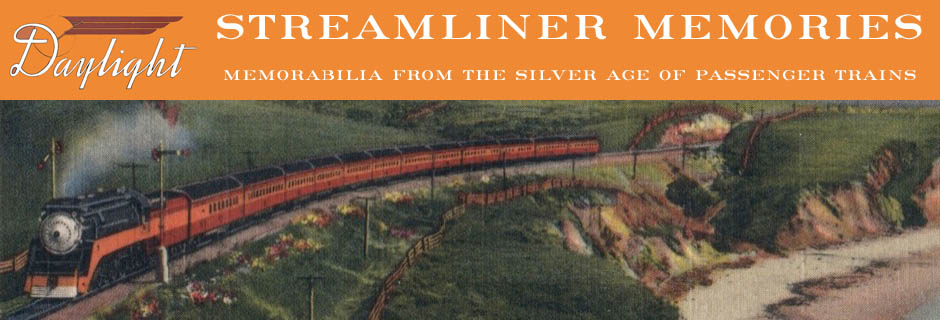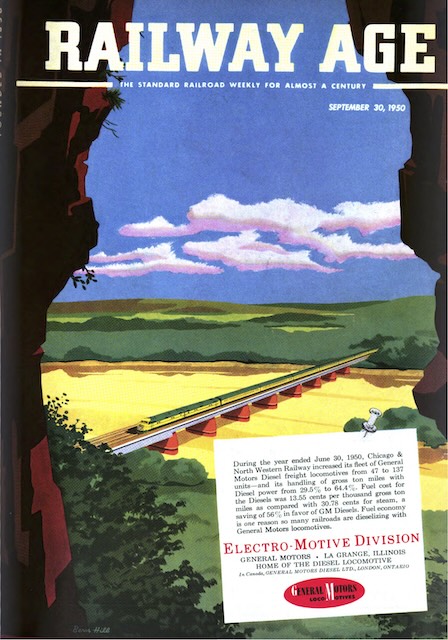Counting the Southern Railway cover from February 11, 1950 and the 1952 Christmas cover, Bern Hill did 46 paintings that appeared on Railway Age magazine covers in 1950, 1951, and 1952. Near the end of this period, General Motors printed up a series of 18″x24″ posters featuring most of Hill’s paintings. Since the last cover painting used on a poster was from the December 15, 1952 issue, I assume the posters were printed in 1953.
 All of the images in this post are from Greg Palumbo’s collection. Click image to download a 6.9-MB PDF of this poster.
All of the images in this post are from Greg Palumbo’s collection. Click image to download a 6.9-MB PDF of this poster.
The posters excluded the thumbtacked blurb that appeared on all of the magazine covers. In its place was the logo of the featured railroad in the lower left corner and a small black band across the bottom with a one- or two-line statement about the picture usually printed in the Coronet typeface (although the first two posters shown here are exceptions), beneath which was usually written, “Powered by General Motors Diesel Locomotives.” Continue reading →
 This image is from the Palumbo collection. Click image to download a 6.2-MB PDF of this poster.
This image is from the Palumbo collection. Click image to download a 6.2-MB PDF of this poster.








